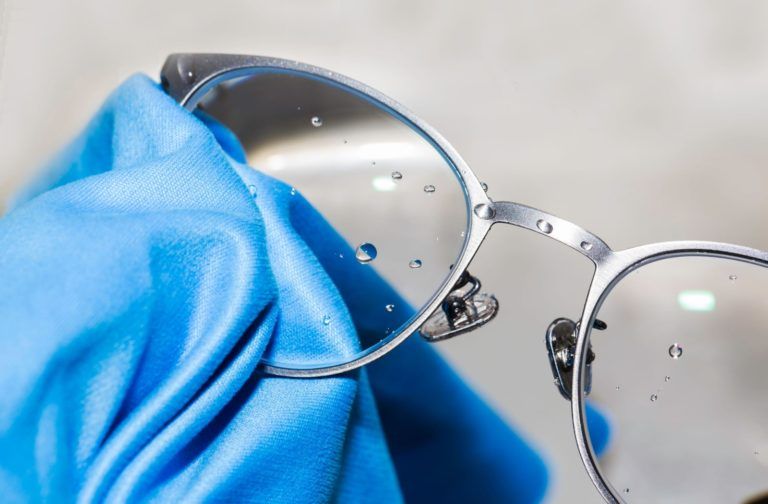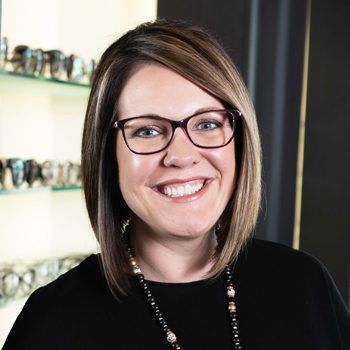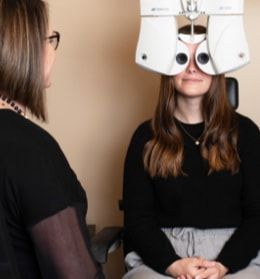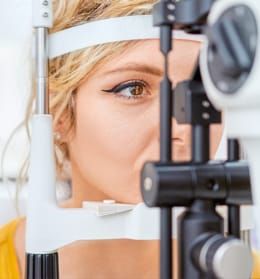Heading to your optometrist for an eye exam can always be a juggling act with your schedule. Especially if you don’t know exactly how long you may be there.
You may wonder about the exact amount of time your eye exam may take, which requires a little more explanation.
Let’s explore what an eye exam entails, why you may need a comprehensive eye exam, and the different factors of eye exams that may affect appointment length. Our Fargo optometrists have performed thousands of eye exams and have seen just about everything when it comes to doing them.
What Goes Into an Eye Exam?
An eye exam involves a series of tests to evaluate your vision and check for any anomalies or eye diseases. Vision care is essential—your optometrist will check your visual acuity and assess your ocular health.
Your eye exam will also explore any refractive errors you may be dealing with. When the light entering your eye isn’t focused correctly on the retina, it results in a refractive error.
Some of these refractive errors include:
- Nearsightedness—otherwise known as myopia, makes far-away objects look blurry
- Farsightedness—also known as hyperopia, makes nearby objects look blurry
- Astigmatism—can make far-away and nearby objects look blurry and distorted
- Presbyopia—makes it harder for middle-aged and older adults to see things up close
Many eye diseases begin with little to no symptoms. A regular eye exam is a great way to preserve your sight and catch any issues early.
Whether you’re going in for an adult eye exam or an eye exam for your children, keeping a consistent schedule is essential in maintaining eye health.
Eye Exam Frequency
The frequency of eye exams can vary—it’s recommended that adults have a comprehensive eye exam yearly. Your optometrist may recommend more frequent appointments if additional risk factors are found.
As you age, your eye exam frequency may increase due to various factors, and you should have your eyes checked more often if you:
- Have frequent changes in your glasses or contact lens prescriptions
- Have a family history of eye disease or loss of vision
- Have a chronic disease that puts you at greater risk of eye disease
- Take medications that have eye side effects
It would be best if you went for an eye exam as needed and at the instruction of your optometrist.
Children’s eye exams are a little bit different—consistent visits to your optometrist are essential to the growth and development of children. Children’s visual health begins at a young age, and it’s important to make sure these vision milestones progress as they should.
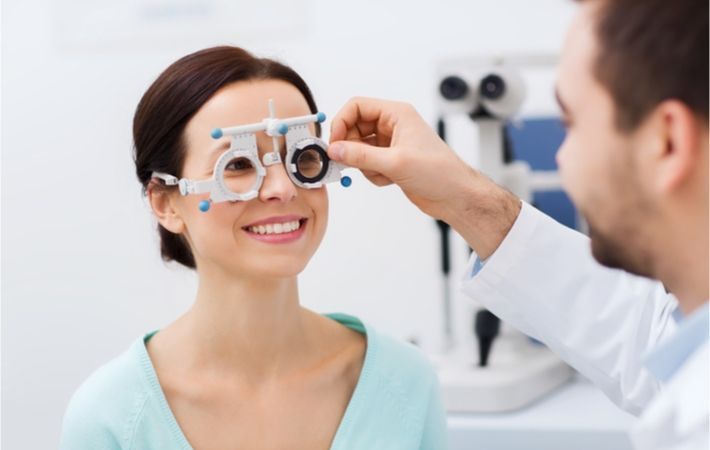
Bridge FIt
The right bridge fit should feel comfortable, even if you’ve been wearing your glasses for several hours. Whether or not your glasses have nose pads, there are some frame fit no-no’s that indicate you’ve got the wrong bridge width or the wrong sized frames overall:
- Glasses slip off of your nose during normal activity.
- Nose pads are leaving painful impressions after wear.
- The bridge is digging into your nose.
- Frame rims are resting on your cheekbones.
If these are occurring, it’s time to find some frames that rest easy on your nose.
Eyes Centered
The most important thing about wearing prescription glasses is making sure that they actually improve your vision. To do this, the lenses must be in the right place relative to your pupils. Your pupils are the black center of your eyes that allows light in. These need to line up with the middle of your lenses.
Now, your pupils don’t have to be in the dead center of your lenses with every pair of glasses you wear, but they should be close. Different styles and frame sizes may alter the exact positioning of your lenses, but here are some rules that should always be followed:
- Vertically, your eyes should NEVER be centered in the bottom ½ of the lenses. It’s okay to be centered slightly above. But pupils should never be centered in the top ¼ of the lenses either.
- Horizontally, your eyes should be quite close to the center of the lens. Your pupils should NEVER be positioned outside the halfway line of the lenses. But there is a small allowance of up to 5mm towards the inside of your lenses
In a nutshell, you want to be looking through the middle of your lenses. Lenses are manufactured with this principle in mind, and this allows you to maximize the effectiveness of your prescription. Keeping your line of sight in the middle of the lens helps improve your peripheral vision, too.
Pure Comfort
Quite simply, your eyeglasses should be comfortable! This means no squeezing on the sides of your head and no digging into your ears, the side of your face, or the bridge of your nose. When this is happening, you probably have the wrong sized frames. Perfect fitting glasses should feel like they’re not even there.
Glasses that don’t fit right are going to give you troubles that won’t go away. Ill-fitting glasses can contribute to:
- Blurry vision (even with an accurate prescription)
- Vertigo
- Headaches
- Feelings of fatigue
Prescription Compatibility
No matter what style of eyewear you prefer, you want to make sure that your prescription is compatible with the frames you want. But don’t worry — that’s our job!
Most of the time, your prescription will work with the frames you prefer. But sometimes, especially for people with severe astigmatism or other complications, your lenses may not fit in every set of frames. Our opticians will always steer you in the right direction and ensure that the styles you seek are lens-friendly.
A Look You Love
The right fit, for any piece of clothing or accessory, is also about the way you feel about it. So finding the perfect fitting eyeglasses means finding the frames you absolutely love! After all, you might wear your glasses every day.
Our opticians love helping you fall in love with frames that express exactly who you are. The perfectly fitting glasses that match your fashion and lifestyle are out there! So don’t settle or get discouraged. Let our eyewear experts introduce you to eyeglasses that make you smile every time you look in the mirror.
Maintaining Consistency
The length of your eye exam will more often than not depend on the specific treatment you need. It’s essential to maintain consistency with your eye exam appointments and catch any issues early for you and your children.
Book an appointment with our optometrists today for more information.
Recent Posts



Categories



Written by Dr. Melissa McCulley
Dr. McCulley graduated with honor from Boston College in 1997 with a bachelor of science and a major in Spanish and pre-medical studies. She then went on to study optometry and graduated with honors from the Southern College of Optometry in 2001. She has past experience from the University of Minnesota Department of Ophthalmology fitting specialty contact lenses and working with low vision patients. Dr. McCulley is experienced in pediatrics and has a keen interest in treating dry eye.




